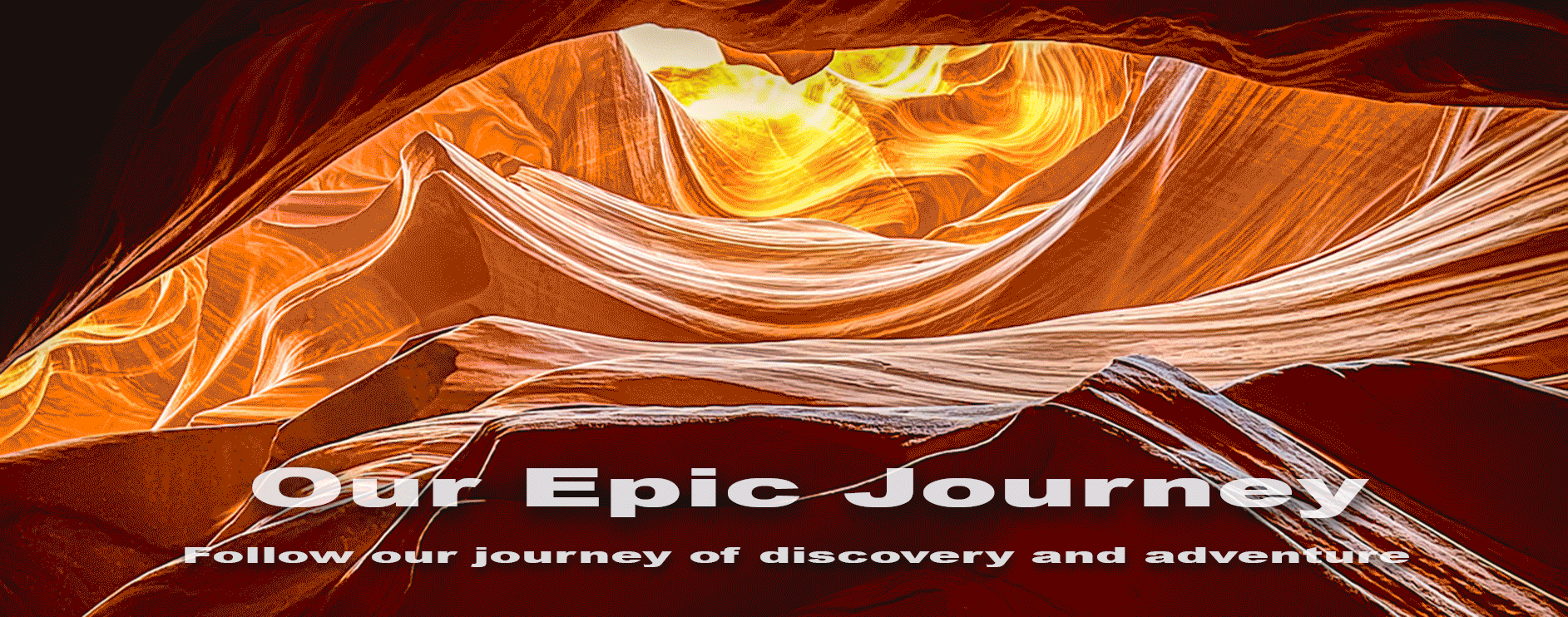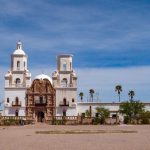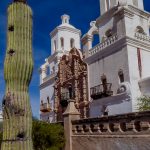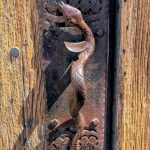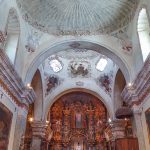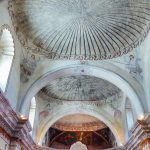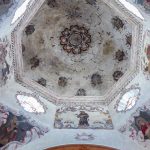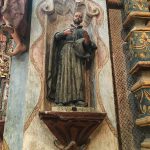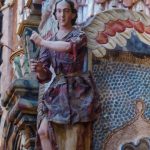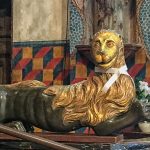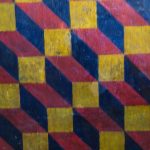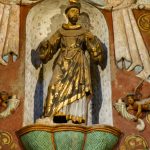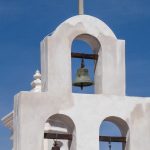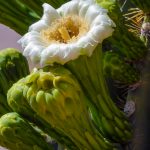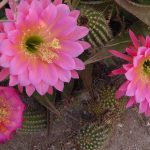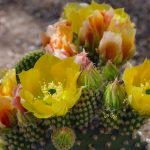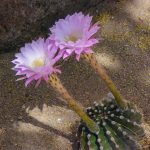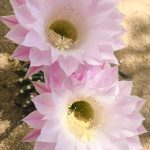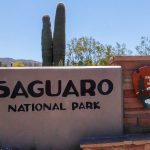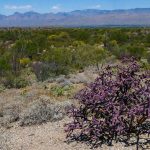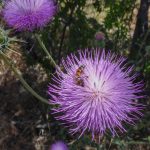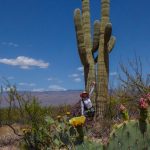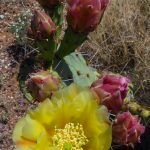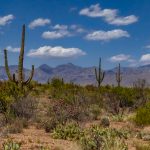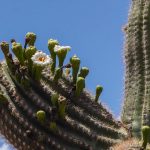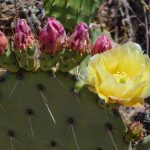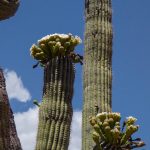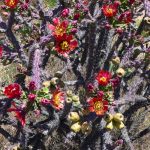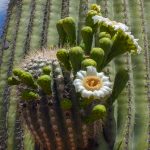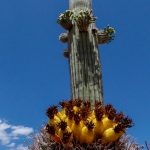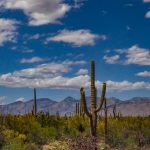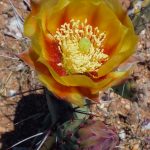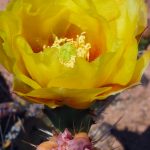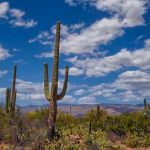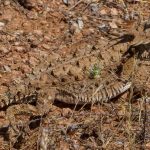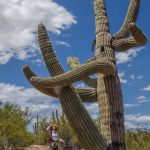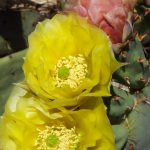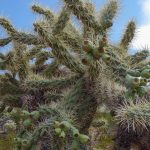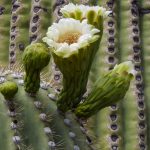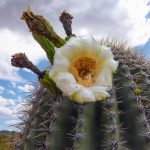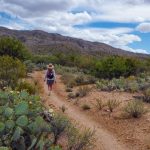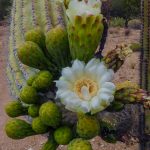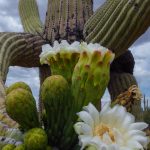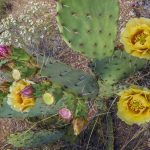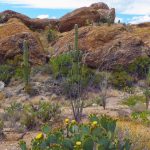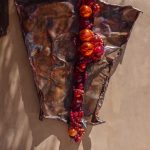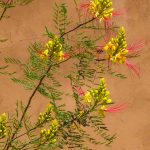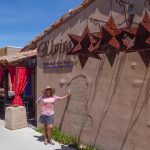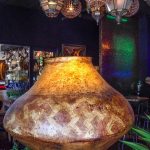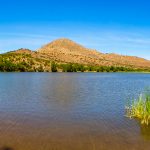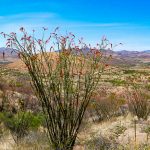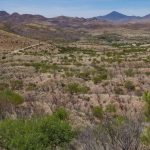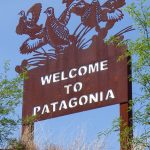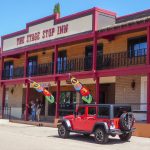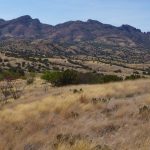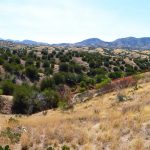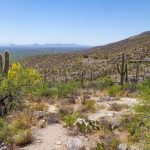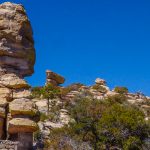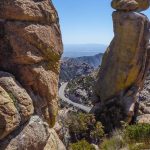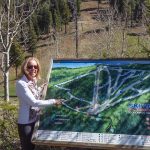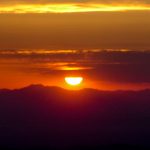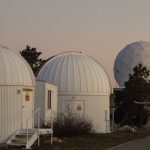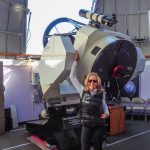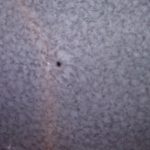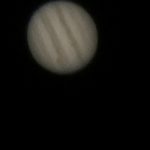
We finally left San Diego and heading east to Tucson to have service done on R SHRPA. We are staying at the Voyager RV Resort until everything is finished. We dropped off the coach at Freedom RV Service center early Thursday, April 21st, and drove out to the Mission San Xavier, to explore this National Historic Landmark, founded by Fr. Kino, the Jesuit pioneer and explorer, in 1692. This Franciscan church is still a working church, built between 1783 to 1797. The church is so well preserved that when you enter the church it is like walking into the 18th century. Statues dating to the 1750’s, vivid late baroque altars, and original paintings adorn the interior. In 1783, the Franciscans borrowed 7,000 pesos to begin the church, and from 1790 to 1815, artists from central New Spain worked to complete the interior, earning double pay because of the threat of Apaches in the area, but in 1797 funds ran out. The church was left incomplete to this day, the east tower was left with no dome or lantern, the choir loft and baptistery paintings were left unfinished. We took a very interesting tour throughout the church and discovered all the things that were left undone when the money ran out. Click on thumbnail to view images
Mission San Xavier
Today we drove out to the Saguaro National Park East located east of Tucson. The Saguaro National Park is separated into two districts, the Tucson Mountain District on the west, (we already visited) and the Rincon Mountain District to the east of Tucson. We drove to the Park entrance and picked up a map of the area to find a nice hiking trail. The key feature of this district is its 8.3 mile Cactus Forest Loop Drive, which provides great views and overlooks of the saguaro cactus. We drove to the Loma Verde Trailhead and set off for a beautiful hike through the multitude of blooming cactus, so many Prickly Pear, and Saguaro cactus every where we looked. It was about a 5 mile hike and the trail was well maintained the entire way, we stopped often to take pictures of all the beautiful flowers. Spring is the best time to visit the desert, because the cactus are all in full bloom. The Saguaro cactus flowers bloom at night to save the delicate flowers from the heat of the sun and last only 24 hours, and they bloom at the end of their arms so it is hard to see the flowers up close. Some of the arms were bent down and we got a closer look at the white blossoms. We stopped at the Visitor Center on our way out. Click on thumbnail to view images
Saguaro National Park in full bloom
We left Tucson and headed south to Tubac, an artists’ colony, where we ate lunch at Elvira’s Restaurant, established in 1927, and has the best décor, Mexican cuisine and award winning dishes. After buying more bottles of oils and balsamic vinegars we continued on to Patagonia, it is a tourist destination, retirement community and arts and crafts center. A very small town, and we drove down the Main Street and on to the Patagonia Lake State Park for a view of the lake surrounded by the Patagonia Mountains. Click on thumbnail to view images
Tubac and Patagonia Lake
On Sunday, April 24th, we drove up Mount Lemmon, about 90 minutes from downtown Tucson. Mount Lemmon , with a summit elevation of 9,159 feet, is the highest point in the Santa Catalina Mountains. We drove up the Mt Lemmon Scenic Byway, 27 miles long, it is one of the most scenic drives in southwest Arizona and provides great vistas, outlandish rocks apes, cool mountain forests and deep canyons. It offers a biological equivalent of driving from the deserts of Mexico to the forests of Canada. When we arrived at the summit we came to the Mount Lemmon Ski Valley, with one chair that was operating to take a ride up the mountain. We stopped for a beer and a snack at the Iron Door Restaurant then continued up to the top to wait for our guide Matt to open the gate, and take us on a tour of the Mt Lemmon Sky Center Observatory. Click on thumbnail to view images
Mt Lemmon Sky Center Observatory
The SkyNights is a popular after-dark five hour program, where we learn the constellations, observe interesting atmospheric phenomenon, and view the wonders of the cosmos from a high-quality astronomical site using the outstanding 32-inch Schulman Telescope. While we had a light snack, Matt presented us with many facts of the universe, the first amazing observation is; our planet Earth can fit inside the Sun 130,000 times, noting how insignificant we are in the entire universe. Then we went up to a mountain overlook to watch the sunset through binoculars, and we were able to see the green flash clearly as the sun slid down below the mountain. Then we went to the observatory dome area to wait for the sky to become dark enough for stargazing. Due to our small group of 7 we were all able to get lots of time on the 32-inch Schulman Telescope to view the heavens, and we saw Jupiter, star clusters, nebulae (star birth and death), galaxies, stellar spectra and lots of satellites. However, once the sun set it got very cold, about 43 degrees and even though we brought lots of extra layers to put on it was still unbelievably cold. Thank goodness for the little warming room where we could take a pause to warm up while Matt reposition the telescope to new sights. What a fascinating evening of stargazing and I highly recommend this tour if you are in Tucson.
